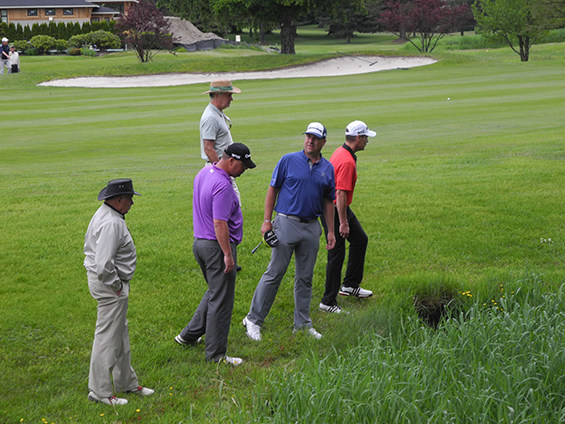Trophy Lake Golf and Casting starting bunker renovation
Trophy Lake Golf and Casting has earned a reputation as one the...


Happy Transition from Fall to Winter. Over the last several articles, we’ve been looking at five situations in Stroke Play when a player would be disqualified for not correcting the following mistakes before making a stroke on the next hole (or if on the last hole of the round, before returning the scorecard). So far, we have covered Situations 1 and 2 noted below.
1. Failure to hole out (Rule 3.3c).
2. Failure to correct having played from a Wrong Tee, or outside the Teeing Area (Rule 6.1b(2).
3. Failure to correct having played a Wrong Ball (Rule 6.3c)
4. Failure to correct having played from a Wrong Place with a Serious Breach (Rule 14.7).
5. Failure to correct having played in the Wrong order in Foursome Play (Alternate Shot Rule 22.3.).
This month let’s look at what happens if you fail to correct having played a wrong ball.
The first thing we need to know is what the Rules of Golf means by “wrong ball.” By USGA definition, a wrong ball, is any ball other than the player’s (your): Ball in play (which could be a ball you substituted for your original ball); Provisional ball (unless you’ve abandoned that ball under Rule 18).
Or a second ball you’ve played when you didn’t know how to proceed (Rule 20.1c) or when correcting a serious breach for a ball played from a wrong place (Rule 14.7).
A wrong ball could be someone else’s ball in play, a stray ball or abandoned ball that you mistake as your own. A wrong ball can also be a ball that is out of bounds or has been lost (not identified within three minutes), or a ball that has not been intentionally put back in play. The Rules even note that part of a wrong ball is still a wrong ball—like if a mower chopped up a ball, and part of it is visible and you make a stroke at it, that is still considered to be a wrong ball!
As a reminder, if you make a stroke at a wrong ball, the penalty in stroke play is the general penalty (two strokes). You must correct the mistake by playing the right ball from its original spot, or by taking relief from that spot under the Rules of Golf.
The stroke made at the wrong ball, and any subsequent strokes or penalties do not count in your score. (Remember, this is for Stroke Play).
There is an exception to this rule, that there is no penalty you make a stroke at a wrong ball that is moving in water, either in a penalty area or in temporary water. If this happens you don’t get the penalty, but you do need to find and play your ball.
Correcting this mistake is timely. Not correcting it in time is costly – if you have played a wrong ball, and do not fix the mistake before teeing off on the next hole (or if on the last hole of the round, before returning the scorecard) you are disqualified!